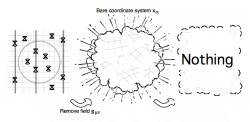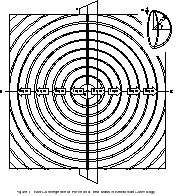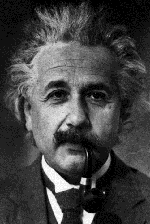|
John D. Norton
History of General Relativity and Gravitation
|
|
home >> research
>> history of general relativity |

|
My most important contribution to the history of relativity was
the presentation of the first analysis of Einstein's "Zurich
Notebook." It turned out to contain Einstein's private calculations
for the crucial period of the making of his greatest discovery, the
general theory of relativity. The notebook enabled a reconstruction
of Einstein's path from the earliest insight of an essential
connection between gravitation and the curvature of spacetime
through to the juggling of the complicated expressions that
eventually become the Einstein equations. The notebook also
explained in detail the outstanding puzzle of why Einstein rejected
these famous equations in 1913, only to return to them ruefully two
years later. My work on this notebook has continued in collaboration
with a group of historians of science under the auspices of the Max
Planck Institute for History of Science in Berlin and has lead to
our joint publication of the definitive multivolume work on the
notebook.
|
"How Einstein Found His Field Equations: 1912-1915,"
Historical Studies in the Physical Sciences, 14
(1984), pp. 253-315. Reprinted in D. Howard and J. Stachel (eds.), Einstein
and the History of General Relativity: Einstein Studies Vol.
I, Boston: Birkhauser, pp101-159. Download.
"Einstein, the Hole Argument and the Reality of Space," in J. Forge
(ed.), Measurement, Realism and Objectivity (Reidel),
1987,pp. 153-188. Download.
Contributing editor to Collected Papers of Albert Einstein, Vol.
4: The Swiss Years: Writings, 1912-1914. Princeton Univ.
Press, 1995.
With Don Howard, "Out of the Labyrinth: Einstein, Hertz and
Göttingen Answer to the Hole Argument," pp. 30-62 in J. Earman, M.
Janssen and J. Norton The Attraction of Gravitation: New Studies
in History of General Relativity. Boston: Birkhäuser. Download.
"'Nature in the Realization of the Simplest Conceivable Mathematical
Ideas': Einstein and the Canon of Mathematical Simplicity," Studies
in the History and Philosophy of Modern Physics, 31
(2000), pp.135-170. Download
With Juergen Renn, Tilman Sauer, Michel Janssen, John Stachel, “A
Commentary on the Notes on Gravity in the Zürich Notebook” in
Juergen Renn (ed.), The Genesis of General Relativity. Vol. 2
Einstein's Zurich Notebook: Commentary and Essays. Springer,
2007 pp. 489-714.
"A Peek into Einstein's Zurich Notebook." Goodies. |
 |
Two fundamental errors led Einstein to reject generally covariant
gravitational field equations for over two years as he was
developing his general theory of relativity. The first is now well
known. It was the presumption that weak, static gravitational fields
must be spatially flat and a corresponding assumption about his weak
field equations. I conjecture that a second hitherto unrecognized
error also defeated Einstein's efforts: he unwittingly reified his
spacetime coordinate systems. The same error, months later, allowed
the hole argument to convince Einstein that all generally covariant
gravitational field equations would be physically uninteresting.
|
"A Conjecture on Einstein, the Independent Reality
of Spacetime Coordinate Systems and the Disaster of 1913," pp.
67-102 in A. J. Kox and J. Einsenstaedt, eds., The Universe of
General Relativity. Einstein Studies Volume 11. Boston:
Birkhaeuser, 2005. Download.
"What Was Einstein's 'Fateful Prejudice'?" in Juergen Renn (ed.), The
Genesis of General Relativity. Vol. 2 Einstein's Zurich Notebook:
Commentary and Essays. Springer, 2007, pp. 715-83. Download.
|
|
Other related work includes a study of the Nordstroem theory of
gravitation, which Einstein identified as the serious competitor to
his newly emerging general relativity. Einstein was able to show
that even this most conservative of theories led to the same
outcome, the association of gravitation with a curvature of
spacetime. |
"Einstein, Nordström and the early Demise of
Lorentz-covariant, Scalar Theories of Gravitation," Archive for
History of Exact Sciences, 45 (1992), pp.17-94. To be
reprinted in J. Renn (ed.), Relativity and its Alternatives.
Download
"Einstein and Nordström: Some Lesser Known thought Experiments in
Gravitation," pp.3-29 in J. Earman, M. Janssen and J. Norton The
Attraction of Gravitation: New Studies in History of General
Relativity. Boston: Birkhäuser, 1993. Download
|

|
In the late 1890s, Seeliger showed that the simplest and most
natural Newtonian cosmology was paradoxical. This paradox, which
even tripped up Newton, was used by Einstein to motivate
introduction of his cosmological constant. I have surveyed and
catalogued the many responses in the literature to this paradox. |
"The Cosmological Woes of Newtonian Gravitation
Theory," in H. Goenner, J. Renn, J. Ritter and T. Sauer, eds., The
Expanding Worlds of General Relativity: Einstein Studies, volume 7,
Boston: Birkhäuser, pp. 271-322. Download
|

|
Einstein insisted that his principle of equivalence was a founding
heuristic for his general theory of relativity. However this
principle was in tension with his theory of 1912 and flatly
contradicted by his theory of 1913. Instead conservation of energy
and momentum provided a pathway to unique gravitational field
equations in both theories. |
"Einstein’s Conflicting Heuristics: The Discovery of
General Relativity," pp. 17-48 in Thinking about Space and Time:
100 Years of Applying and Interpreting General Relativity.
Einstein Studies, Volume 15. C. Beisbart, T. Sauer, C. Wüthrich
(eds). Cham, Switzerland: Birhäuser/Springer Nature, 2020. Download. |

|
In his treatment of spacetime singularities, Einstein privileged
analytic expressions over geometry. Modern relativists do the
reverse and thus find Einstein's discussion baffling. |
"Einstein against Singularities: Analysis versus
Geometry," Philosophy of Physics 2(1): 13, 1–73. DOI:
https://doi.org/10.31389/ pop.91. Download. |
|
|




